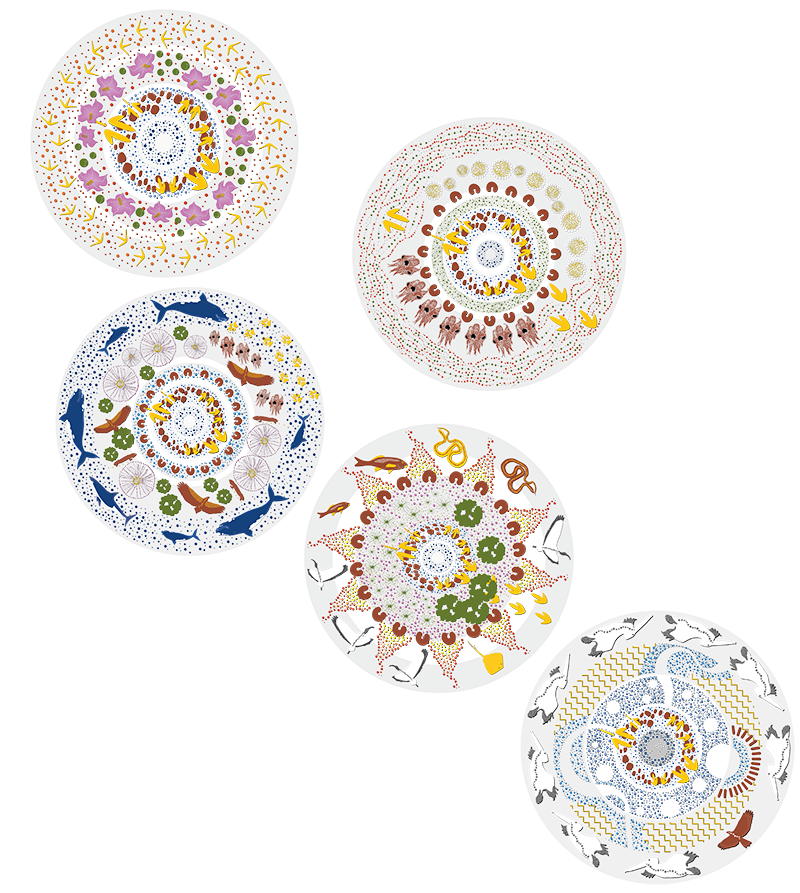Reconciliation
Reconciliation
Our commitment is to build enduring and respectful relationships with Aboriginal and Torres Strait Islander people - meeting the challenges of the future by recognising our shared history and valuing the knowledge, experience and contribution of the world’s oldest living and continuing culture. As part of this commitment, we are working to provide sustainable opportunities for our employees, suppliers and the communities we work with.
We support Reconciliation Australia’s aim of closing the life expectancy gap that exists between Aboriginal and Torres Strait Islander people and other Australians. We have been setting Reconciliation goals through a Reconciliation Action Plan (RAP) and have recently completed our 2020-2023 Stretch RAP which had the aim of developing long-term strategies and working towards defined, measurable outcomes.
A close out report sharing highlights as well as our performance against a series of actions is available here and an infographic summarising some of our achievements is available here. We are currently in the process of developing our next RAP and we are committed to ensuring our actions are impactful for our staff and the customers and communities we serve.
Some of our current Reconciliation programs include:
- Pirku-Itya (Reconciliation Partnerships Program): SAWater - Pirku-Itya
- Aboriginal employment and retention programs
- Supporting Aboriginal and Torres Strait Islander businesses
- Our Art on Infrastructure program: SAWater - Art on infrastructure
Our Aboriginal Connection Branding
We recognise and appreciate the connection that Aboriginal and Torres Strait Islanders have with the land and water. Our Aboriginal Connection Branding (ACB) is a way for us to visually demonstrate that appreciation and represents the Aboriginal peoples of South Australia.
 Our Aboriginal Connection Branding guidelines uses the beautiful artworks created by Paul Herzich, a Kaurna landscape architect and visual artist, to demonstrate Aboriginal people’s connection to land and water. The individual artworks allow people to walk in the ancient footsteps of Aboriginal people from around the state, enabling them to learn, feel and visualise aspects of their culture, and in particular, waterholes. For Aboriginal people water is more than just a resource, it plays a significant role in their traditions and cultural practice. The sustainability of water sources means the continuation of cultural connection for generations to come.
Our Aboriginal Connection Branding guidelines uses the beautiful artworks created by Paul Herzich, a Kaurna landscape architect and visual artist, to demonstrate Aboriginal people’s connection to land and water. The individual artworks allow people to walk in the ancient footsteps of Aboriginal people from around the state, enabling them to learn, feel and visualise aspects of their culture, and in particular, waterholes. For Aboriginal people water is more than just a resource, it plays a significant role in their traditions and cultural practice. The sustainability of water sources means the continuation of cultural connection for generations to come.
The five circles represent Adelaide, Western Desert, Far West Coast and Eyre Peninsula, North East Corner and, Riverland and South East Corner and in the artist, Paul Herzich’s words, they depict the following:
Adelaide
Emu and Kangaroo visit a centuries old waterhole on Kaurna Country. Large stands of stringy bark trees form the eastern border of Kaurna Country while tufts of kangaroo grass grow westerly across the plains. The Ibis is a significant cultural icon of the Kaurna people that can be found around wet areas. Cultural icons from neighbouring groups radiate out from the flames of the seasonal fires that burn brightly on Kaurna Country to regenerate the landscape.
Western Desert
Bush tomatoes blossom and set fruit in abundance throughout the APY Lands and Western Desert region. Bush turkey tracks walk across the hot sand. Kangaroo and Emu come together at a desert waterhole to share fresh, cool and clean water.
Far West Coast/Eyre Peninsula
Known as the home of the whale and the shark, the wedge-tailed eagle circle above the tall coastal cliffs and over the native vegetation which shelters the sleepy lizard, while the wild dog makes its way to a deep rockhole in the seemingly flat landscape, which contains fresh, clean water for people and animals to drink.
North East Corner
Amongst the rippled sand dunes, a mound spring continuously bubbles water to the earth’s surface. Sturt’s desert pea spectacularly displays an iconic carpet of red blooms across the landscape, while poached egg daisy flowers glisten in the morning sun near the Queensland border.
Riverland/South East Corner
The pelican circles high above the River Murray, while the hawk flies low to warn the people. The waterholes and interconnected caverns of the south east travel for many miles below the earth’s surface. Wood engravings shine under the moon light and the Southern Cross constellation.
The fixed position when using all five waterholes is represented on the right. Each waterhole is geographically positioned in relation to the state of South Australia.







